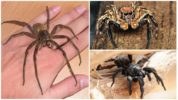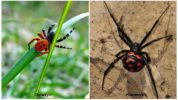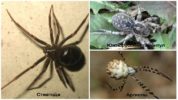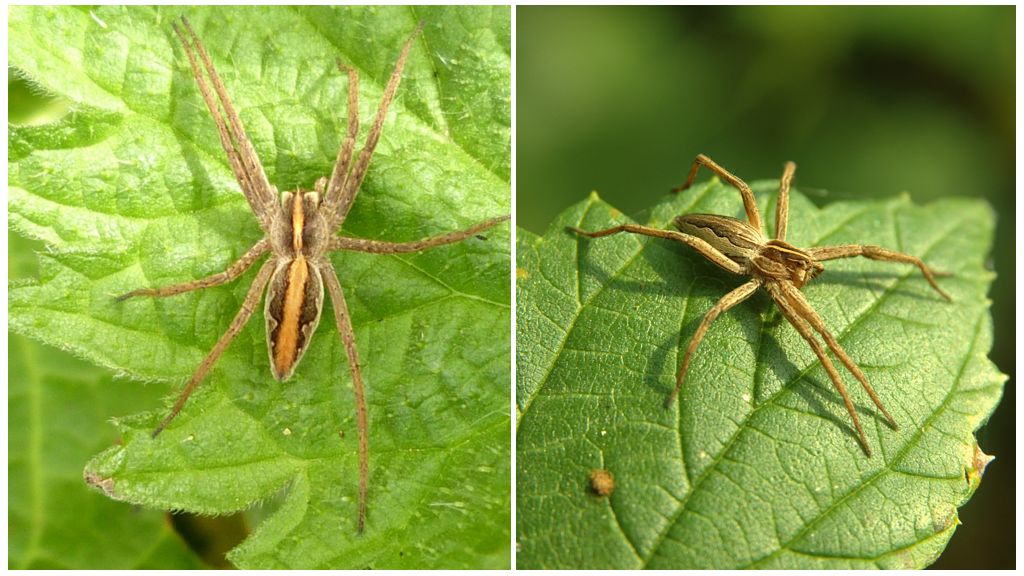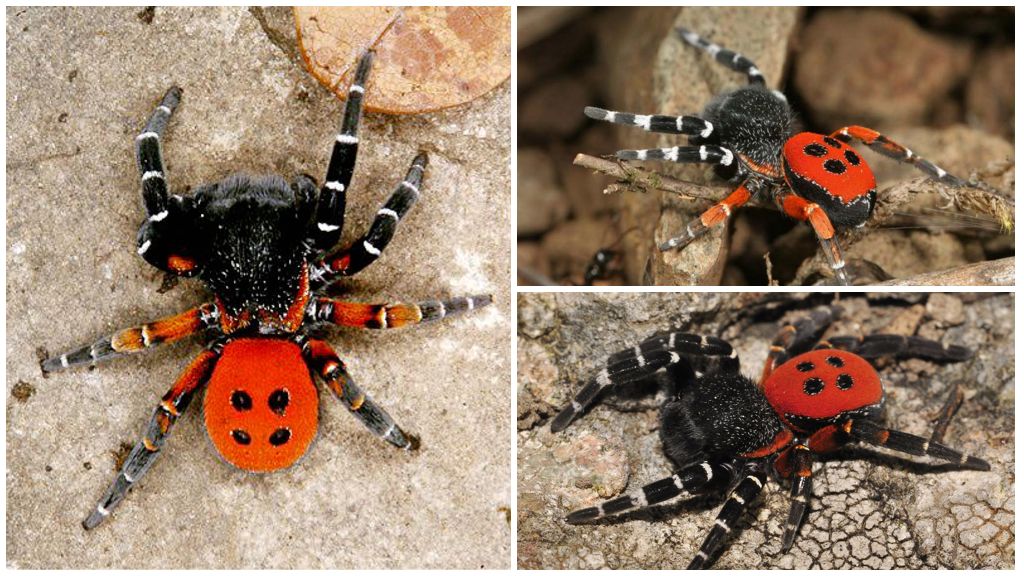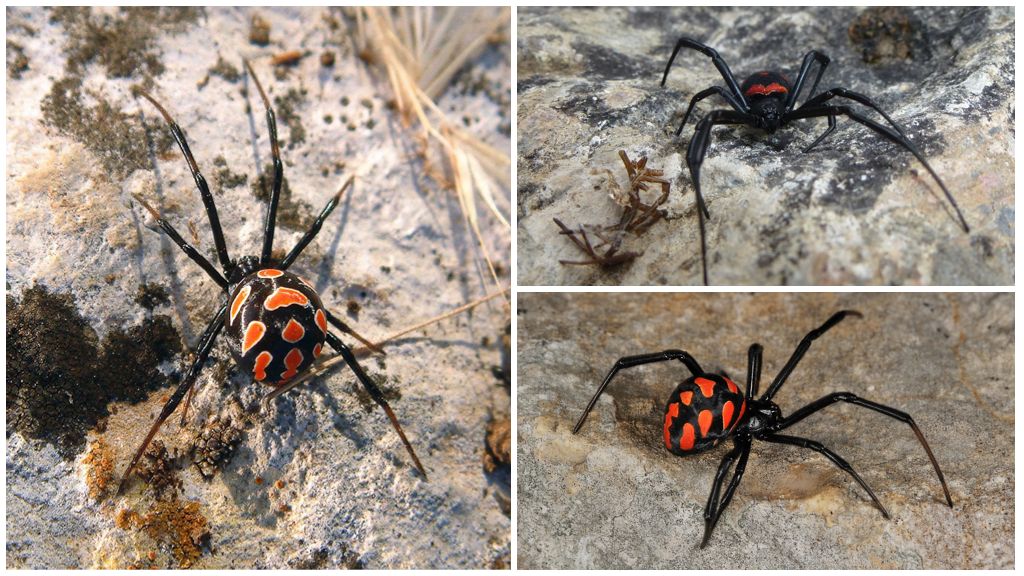- Spiders of Russia
- Spiders of Russia
- Spiders of Russia
- Spiders of Russia
Arachnids living in Russia, there are more than 1000 species. This is a lot, considering that more than 42 thousand are known worldwide species of spiders. Due to the size of the country, stretching across the temperate climatic zone almost across Eurasia, almost all species of Eurasian arthropods are represented in Russia, except tropical ones. Russian spiders are usually not particularly toxic, with the exception of several southern species and silver spider. Sometimes arthropods brought there by humans come across in an atypical region.
Families
In Russia, such arthropod families are represented as:
- wolves;
- hunters;
- funnel;
- horses;
- cybeids;
- diggers;
- black widows;
- steatodes;
- side walkers;
- knitting spiders;
- spiderworms.
These are not all species of spiders living in Russia, but a significant part of them. Most arthropods are able to live in any conditions. Photos and names of cosmopolitan spiders can be found in the description of the fauna of any of the regions of Russia. Some prefer a dry, hot climate and live in the southern part with an abundance of steppes. Others need water or moist places, such arthropods are usually found in the central part, where there are many forests with lakes and swamps.
Widespread species of spiders in Russia
Russian spiders are species living in the Holarctic region, therefore, they are found in many regions of the northern hemisphere. Some of them have adapted to live next to a person. Many "help" gardeners to clean the garden from pests, which is why they are considered summer cottagers.
Horses
Of the most widespread families can be called horse spiders. Representatives of the family are found throughout the country. These medium-sized spiders do not pose a danger to humans. But they can scare you if they jump from an ambush. But horses prefer not to contact a person. If the animal jumped out, then something scared him. He does not show aggression.
Hunters
The second largest can be considered hunter spiders or pisaurid. These species belong to forest spiders, choosing shady moist places for living. The edge hunter can settle in a clearing or forest edge. This species prefers to ambush grass and shrubs. The rest settle near water bodies and often wait for prey, lowering their front paws to the water.
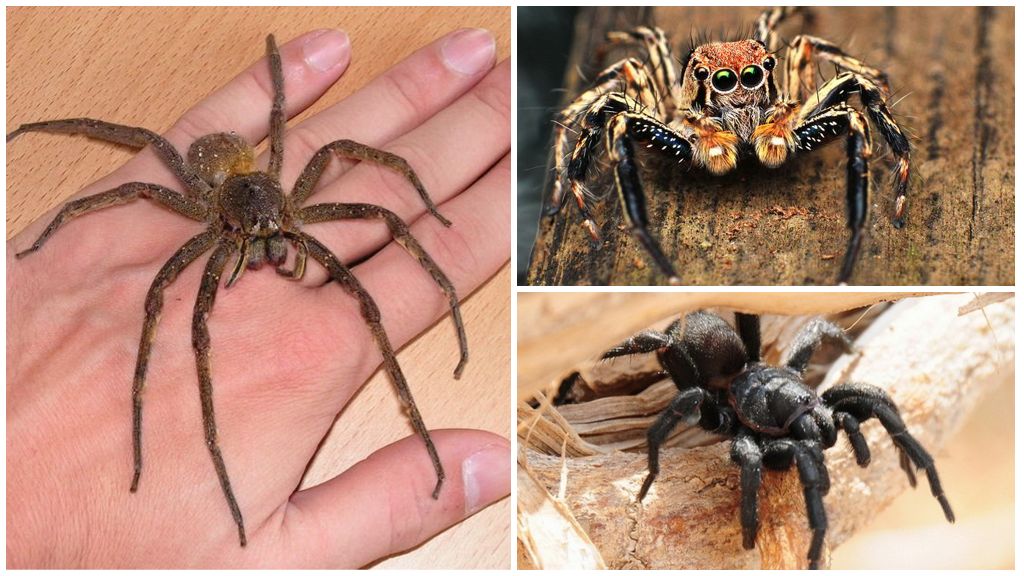
Funnel
This group got its name because it arranges nests in the form of a spider web funnel. It includes both a harmless brownie and a rather dangerous southern cellar spider. Depending on type funnel spiders arrange nests:
- in the ground;
- in forest litter;
- under the stones;
- at the base of the bushes;
- in the basements of houses and woodpiles of firewood.
On a note!
House spider often settles in sheds and basements of houses.
Orbers
Representatives orbiting often called garden spiders. Of these, the most common spiders are crosses. It is they who are often ranked as garden ones, since they like to settle in gardens and parks.These spiders are common in Central Russia and the Far East, in the south and in the north up to the Arctic Circle.
Synanthropic species
One of the species of the grassland family has actually become home spider. Under natural conditions, it is already impossible to find. Due to the tendency to coexist with humanity today haying spider - the most common type. Often he travels with a man.
Interesting!
Unlike the brownie, it settles right in the rooms, in the kitchen and other residential premises. Capable of overnight weave a web in the pan used in the evening. These are absolutely not dangerous spiders for humans, but they add cleaning.
Spiders of the central part of Russia
This region bears several names at once, so the spiders of the Black Earth or the Middle Strip are two names of the same group. The range of these arthropods extends also to Eastern and Central Europe in the west and up to Murmansk in the north. All of the above groups can live north or south of the Central region.

Spiders in the northwest of Russia also belong to the above groups. Arthropods living in the central region can be distinguished silver spider and heiracantium.
On a note!
Serebryanka living in water is distinguished by the fact that it is the only truly poisonous northern spider. Since her habitat is standing water, she has little contact with humans and her bites are rare.
Heyrakantium is a yellow spider, the main habitat of which used to be the more southern regions of Eurasia. His Asian name is sack. The bite of this arthropod is rather painful, but not life threatening. In connection with global warming or the intensification of traffic flows, heyrakantium began to spread to the north. In Karelia, a spider was found on the shore of Lake Onega.
In areas with a significant number of water bodies: Karelia, Leningrad region, the woods Moscow region and others - you can meet knitting spiders. These arthropods choose their place of residence near ponds, since their food is mosquito-centipedes. Knitters' networks are round with large holes between the hunting threads. Animals are completely harmless.
Arthropods of the steppe regions
Among the spiders of the south of Russia there are really poisonous species, the bite of which can lead to death:
- karakurt;
- cellar;
- black erezus;
- steatodes.
Regarding Russia, the cellar is a spider living in the Crimea and the Caucasus. Although the distribution area of this animal is much wider, its main habitat is located to the west.
Erezus
Black erezus (black clover) is an inhabitant of the steppes. It can be found among the spiders of the Volga region, Tatarstan, Kalmykia. It was recently discovered in the Crimea. Spider bite painful.
Interesting!
The spider has a red abdomen with black dots, which is why it received the popular name "ladybug spider." But only males have such a color. Females are completely black.
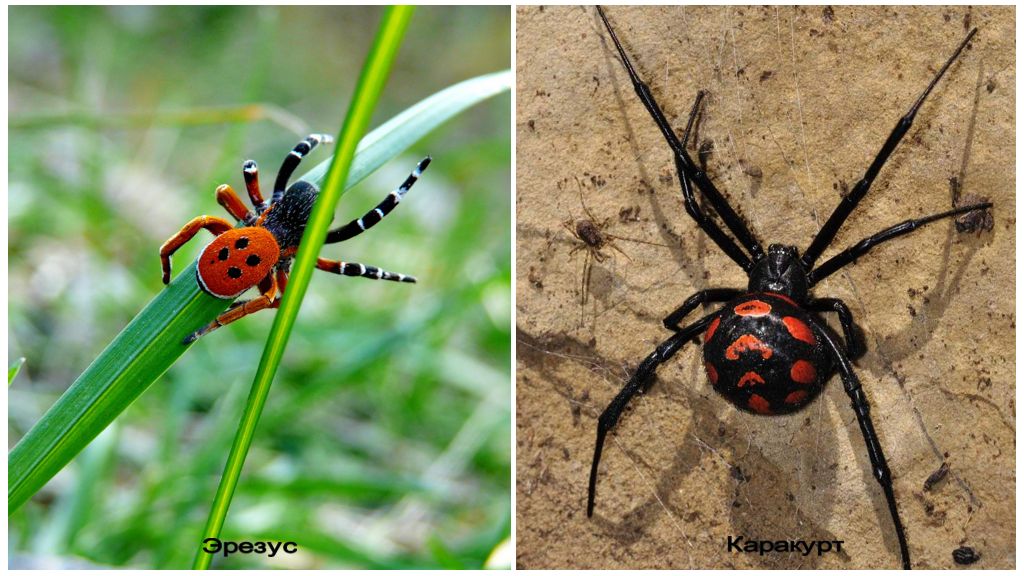
Karakurt
Karakurt is not the largest spider in Russia, but the most dangerous bunch in Russian open spaces. Contrary to the stamp that these animals are found in the Karakum desert, in fact, their range is much wider. Karakurt are found among spiders of Crimea, Tatarstan, Stavropol Territory and other relatively warm regions. The range is limited to the steppe zone. In cooler forest regions, karakurs do not take root, although spiders were also found in the Altai Territory. But with a high degree of probability he got there by chance with the help of a man and is unlikely to survive the winter.
On a note!
All types of karakurt are black spiders. They can be with red or white spots on the abdomen, but the cephalothorax and paws are always black. The only exception is white karakurt.
Steatode
The arthropod is very similar to karakurt in body shape and color. Because of this, it was called "false karakurt." The habitat of arthropods almost coincides.They can be found among the spiders of Kalmykia, Tatarstan, Kazakhstan, Crimea.
On a note!
It is possible that a steatode was actually found in the Altai Territory, since it is more cold-resistant.
Less poisonous include:
- South Russian tarantula;
- argiopes;
- atypus wall.
The wall atypus lives in only one area - in Saratov, and is listed in the Red Book as a rare species.
South Russian Tarantula
This night spider has a very large distribution area. Habitat south tarantula includes all steppe regions of Russia and neighboring countries:
- Southern Ukraine
- Crimea;
- Caucasus;
- Steppe part of Adygea;
- Stavropol region;
- Krasnodar region;
- Tatarstan
- Volga region;
- Altai region;
- Far East;
- Kazakhstan;
- Mongolia.
Tarantulas are the largest spiders in Russia. They differ in their original appearance. The whole body is densely covered with hairs, and the length of the females reaches 3 cm. The animal is very unpretentious and able to survive in extreme conditions, if only to burrow tarantula did not flood.

Argiopes
Most species of the family are southern inhabitants, but these animals are found to the north. Argiopes they have a bizarre appearance: some of them are similar in color to wasps, while others have a “jagged” shape of the abdomen unusual for these animals.
Black and yellow stripes alternate on the abdomen of female Brunnich's argiope, exactly like a wasp. Males of this animal have a nondescript color.
In Argiope lobate (Argiope lobata), the abdomen has serrated protrusions on the sides. These protrusions give the arthropod a somewhat threatening appearance.
Like the crosses, argiopes weave round hunting nets. Less common are the crosses, but the habitat is similar. The bite of an argiope is much stronger than that of a cross. May cause local irritation.
Far East
Among the usual spiders of the Far East, two other types of atypus stand out. This family of excavator spiders is not numerous and totals only 32 species. In Russia, there are 4 species in total. In the Far East, 2 species of atypus out of 4 live. Animals are not dangerous to humans, but because of the long chelicera, they can cause a painful bite.
Arthropods are not aggressive alone, but they live in colonies and attack in the event of a threat to the family. If danger threatens only one individual, the animal folds its legs and pretends to be dead.
